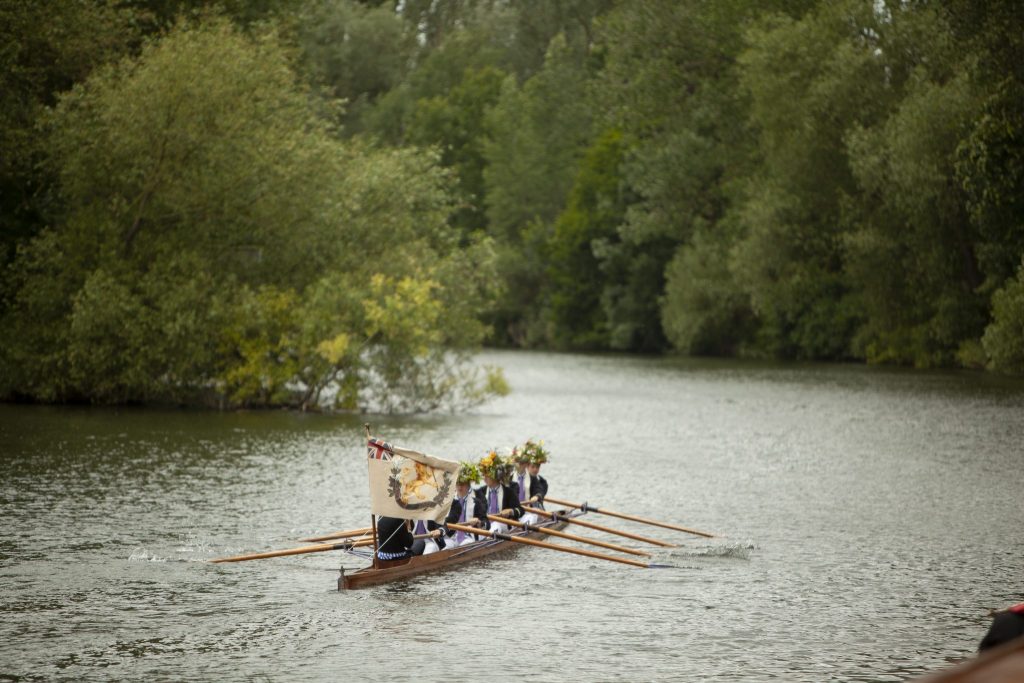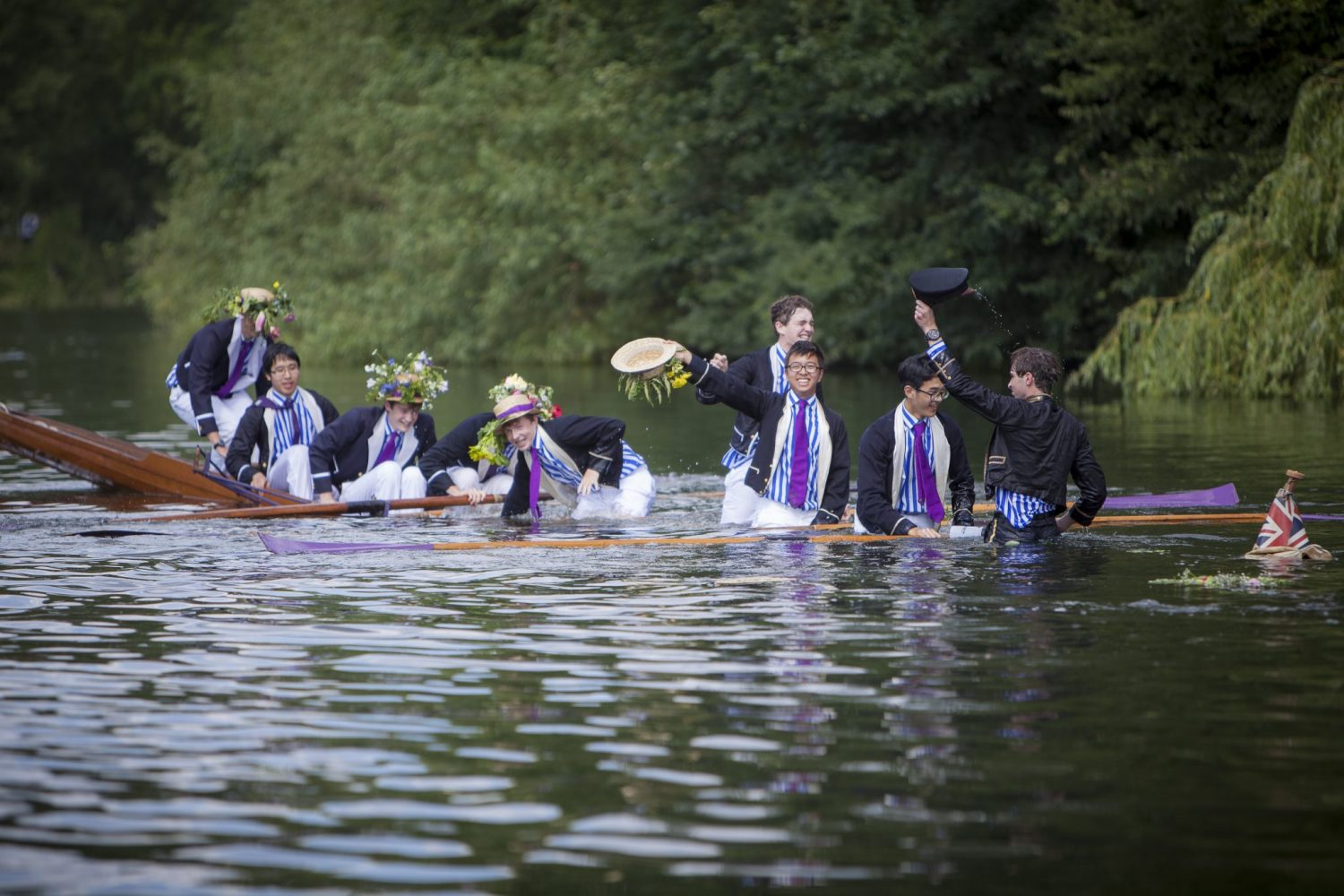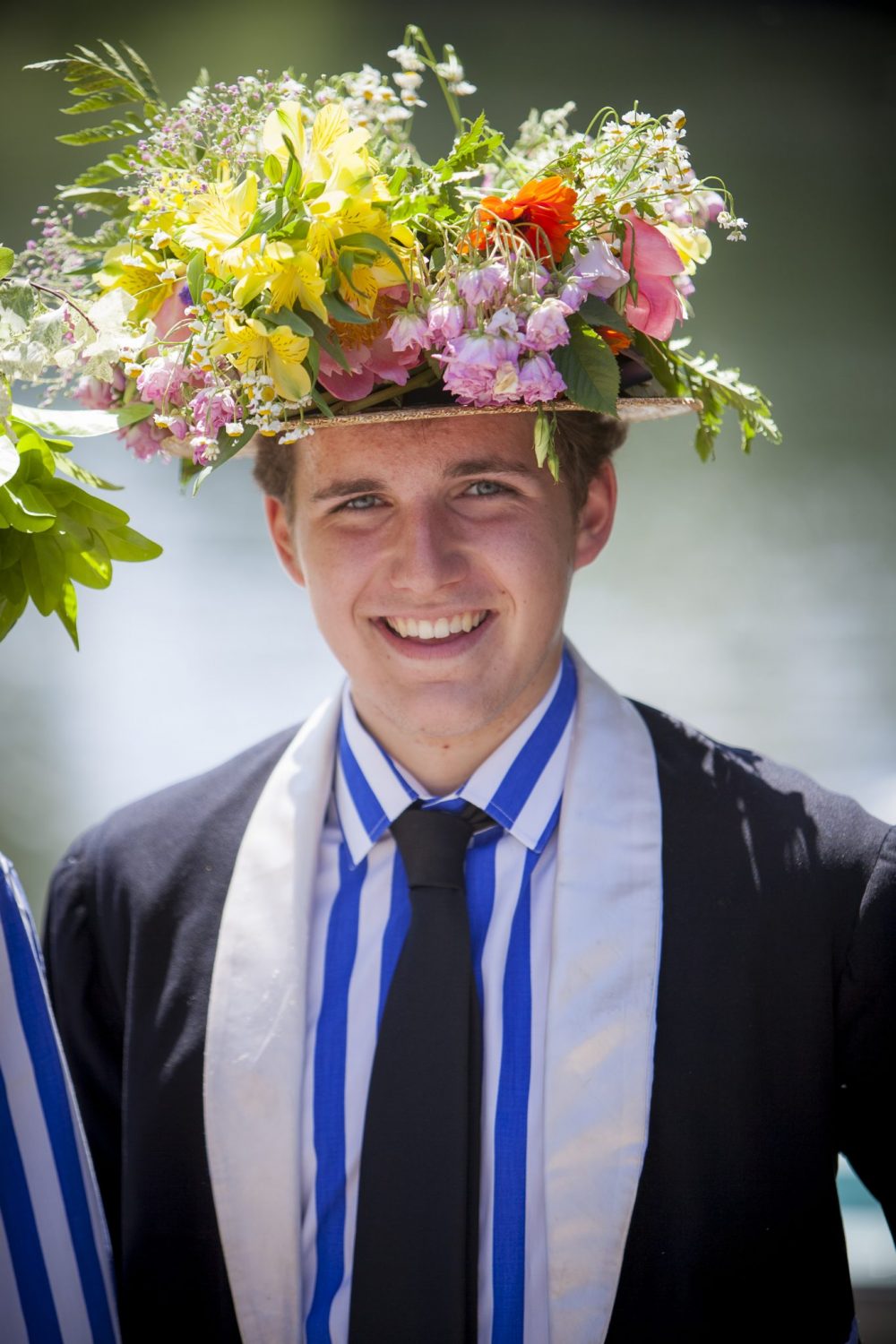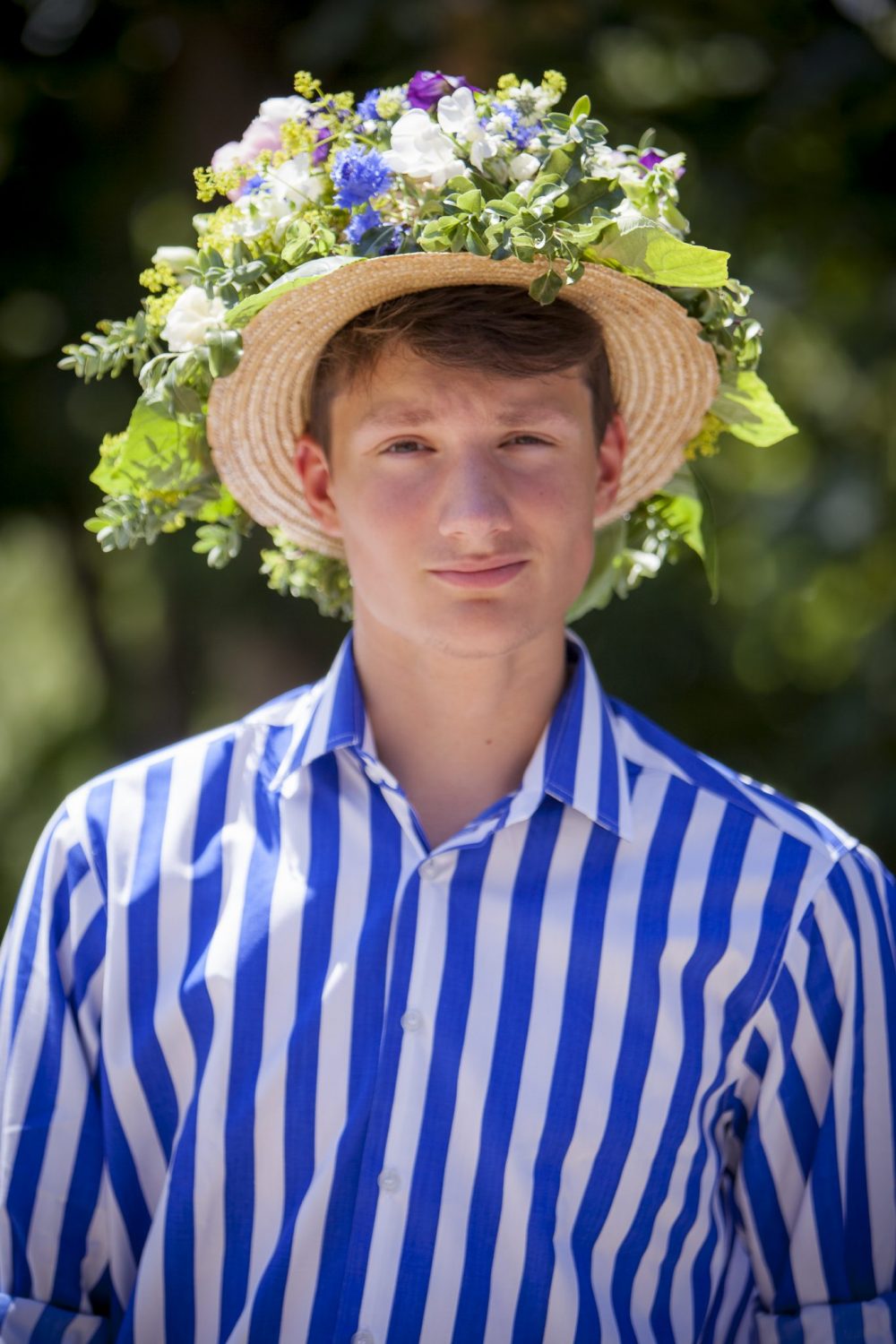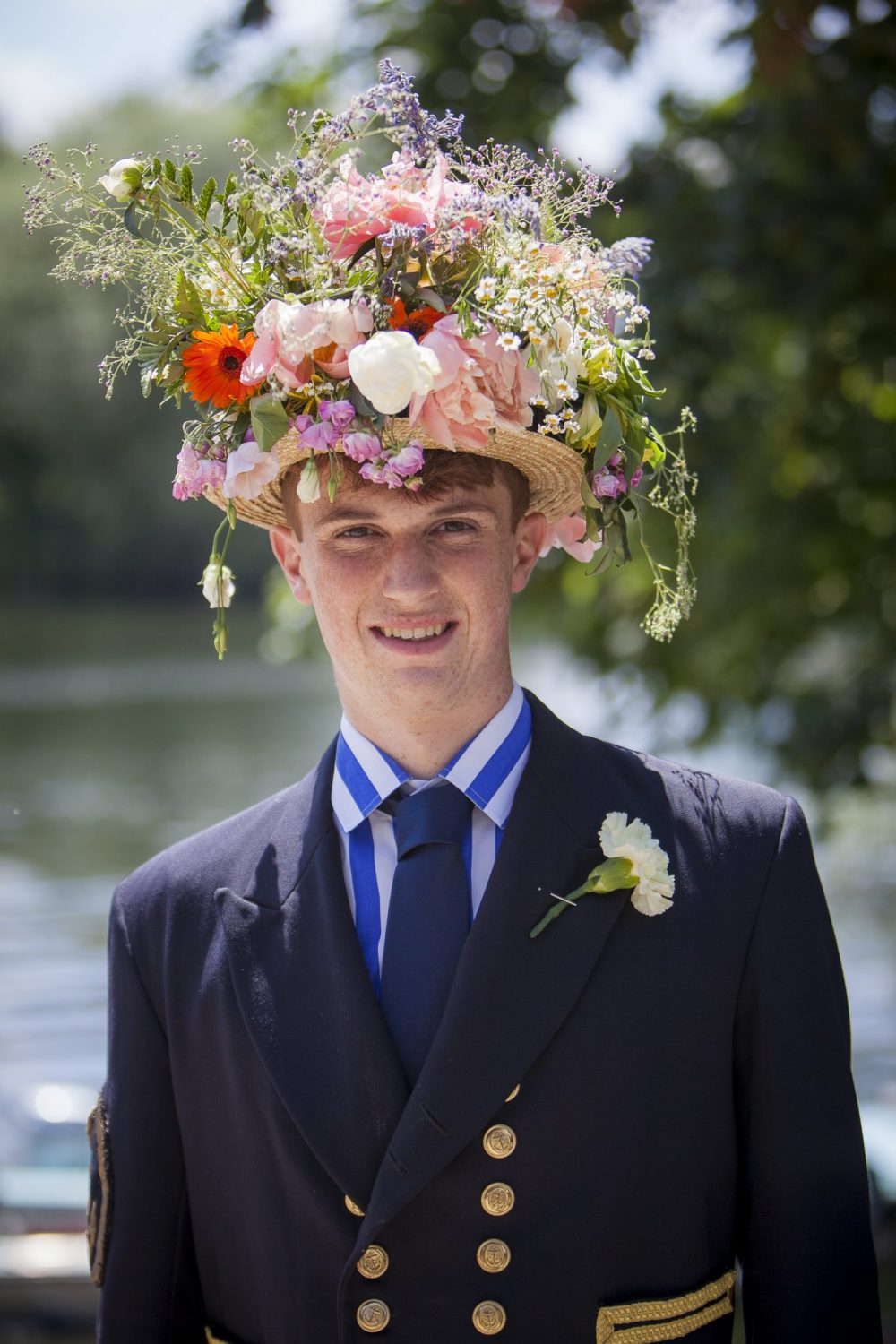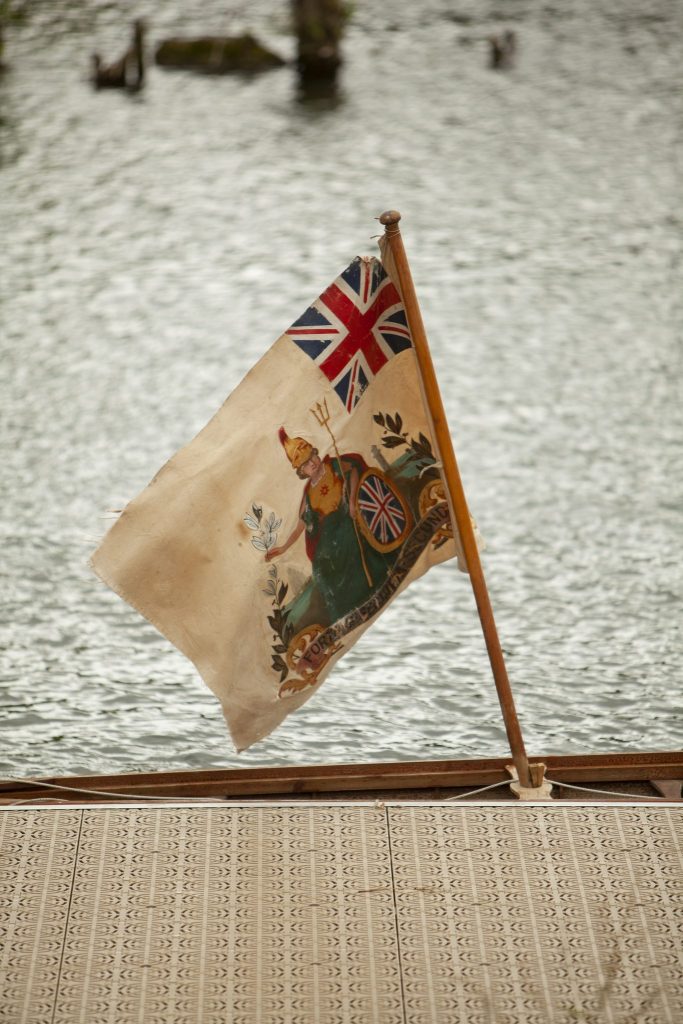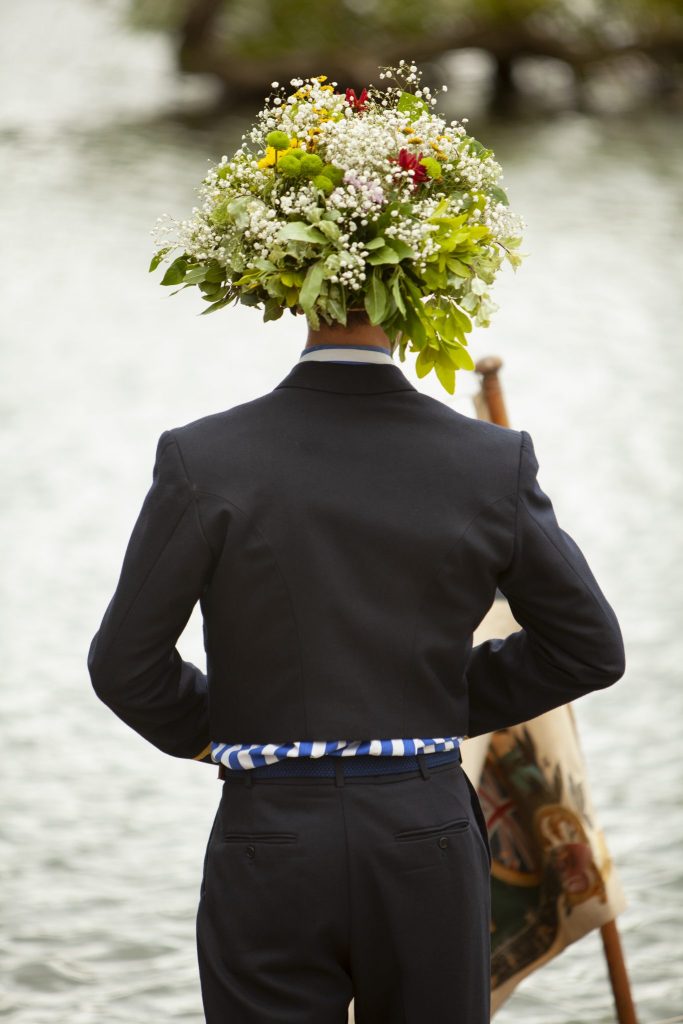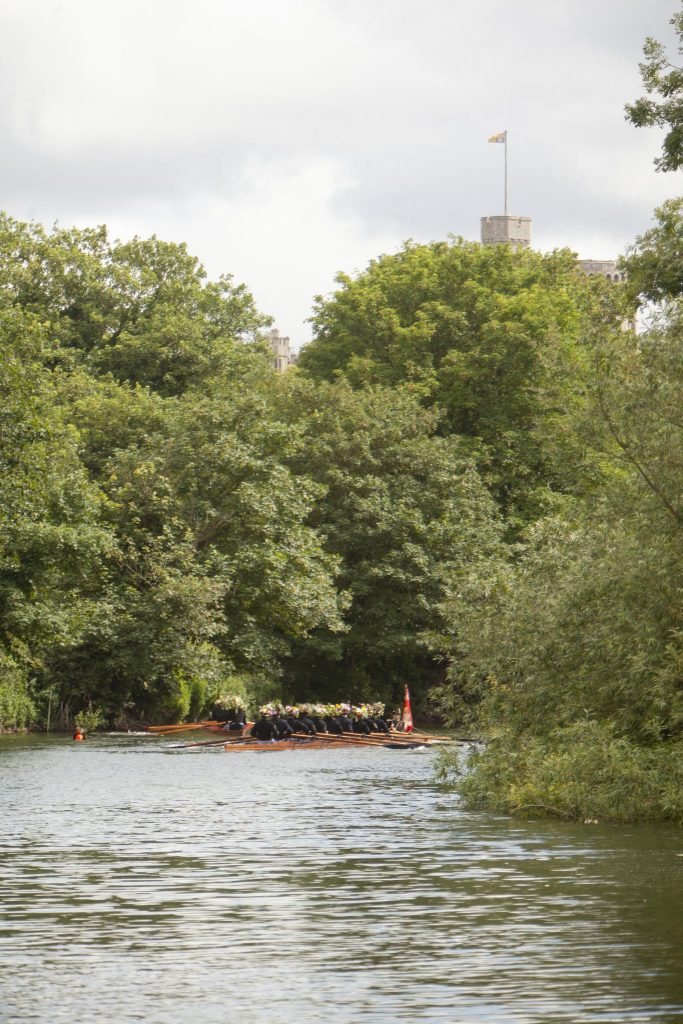The Procession of Boats
The Annual Fourth of June Eton College Procession of Boats, River Thames, Windsor, Berkshire. Taken by Rhubarb & Custard Photography.
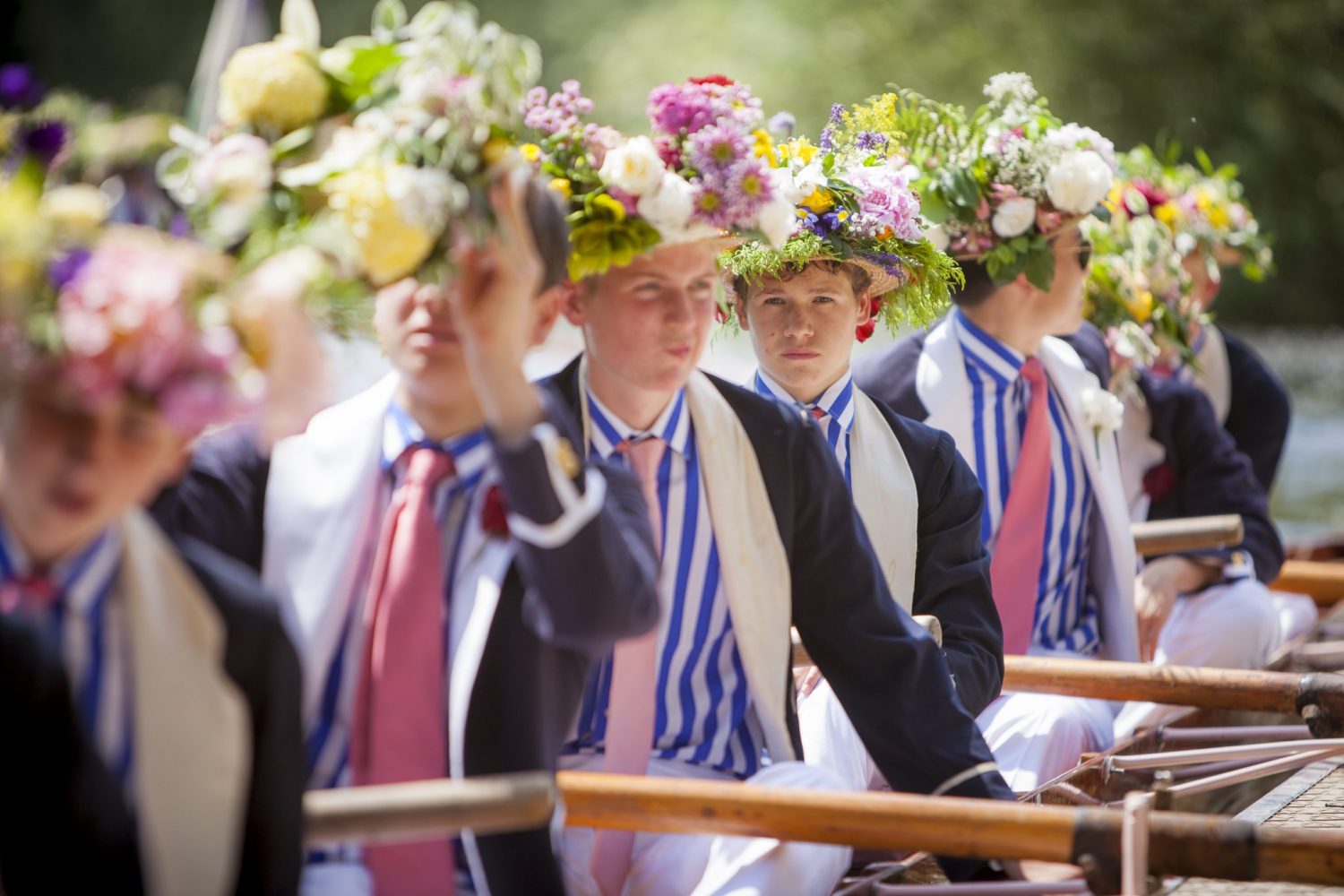
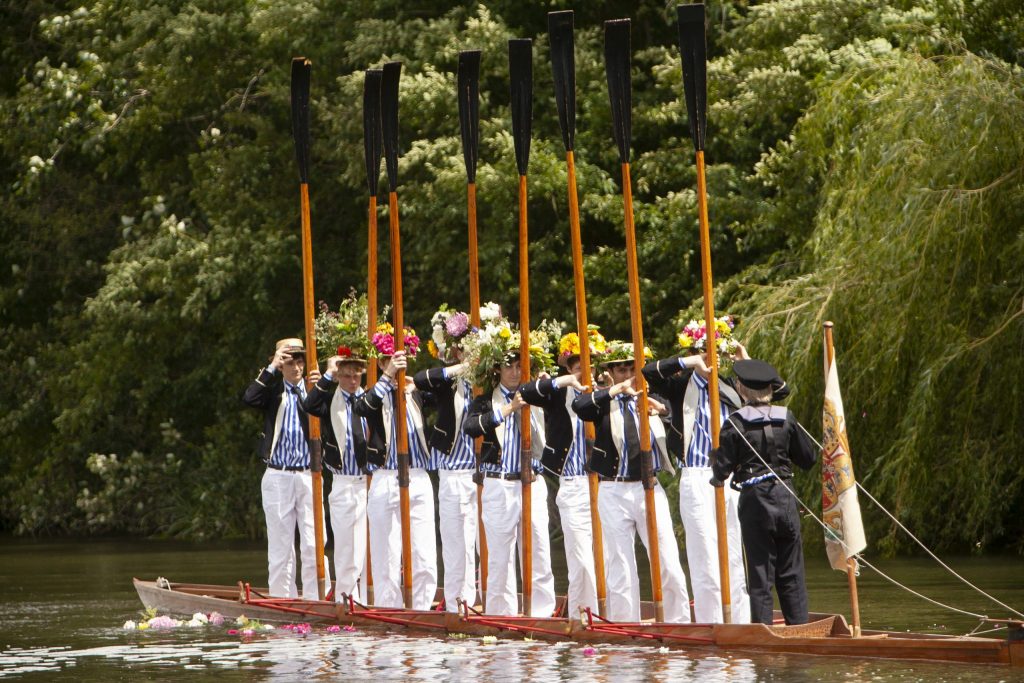
Eton has a long standing tradition since the 1780’s that started informally when the boys made their own amusements. Dressed in uniforms dating from Nelson’s time, boys row in wooden clinker-built eights, and one ten, along the Thames passed Windsor Castle. They then lift the oars out of the water and stand upright behind them rendering the boat wholly unstable and top heavy, not always with great success.
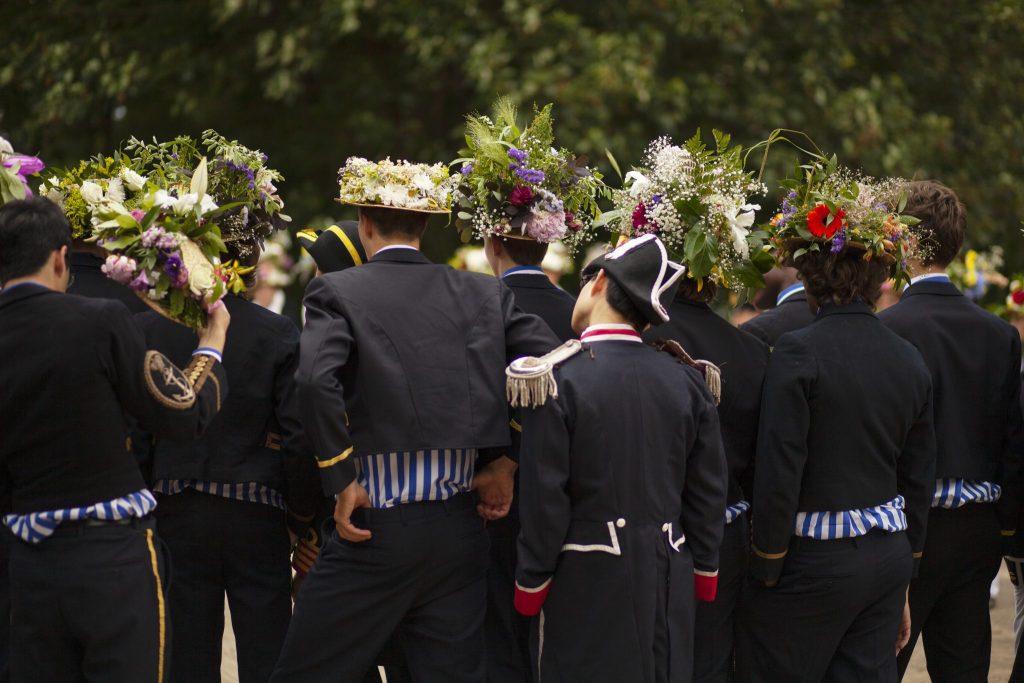

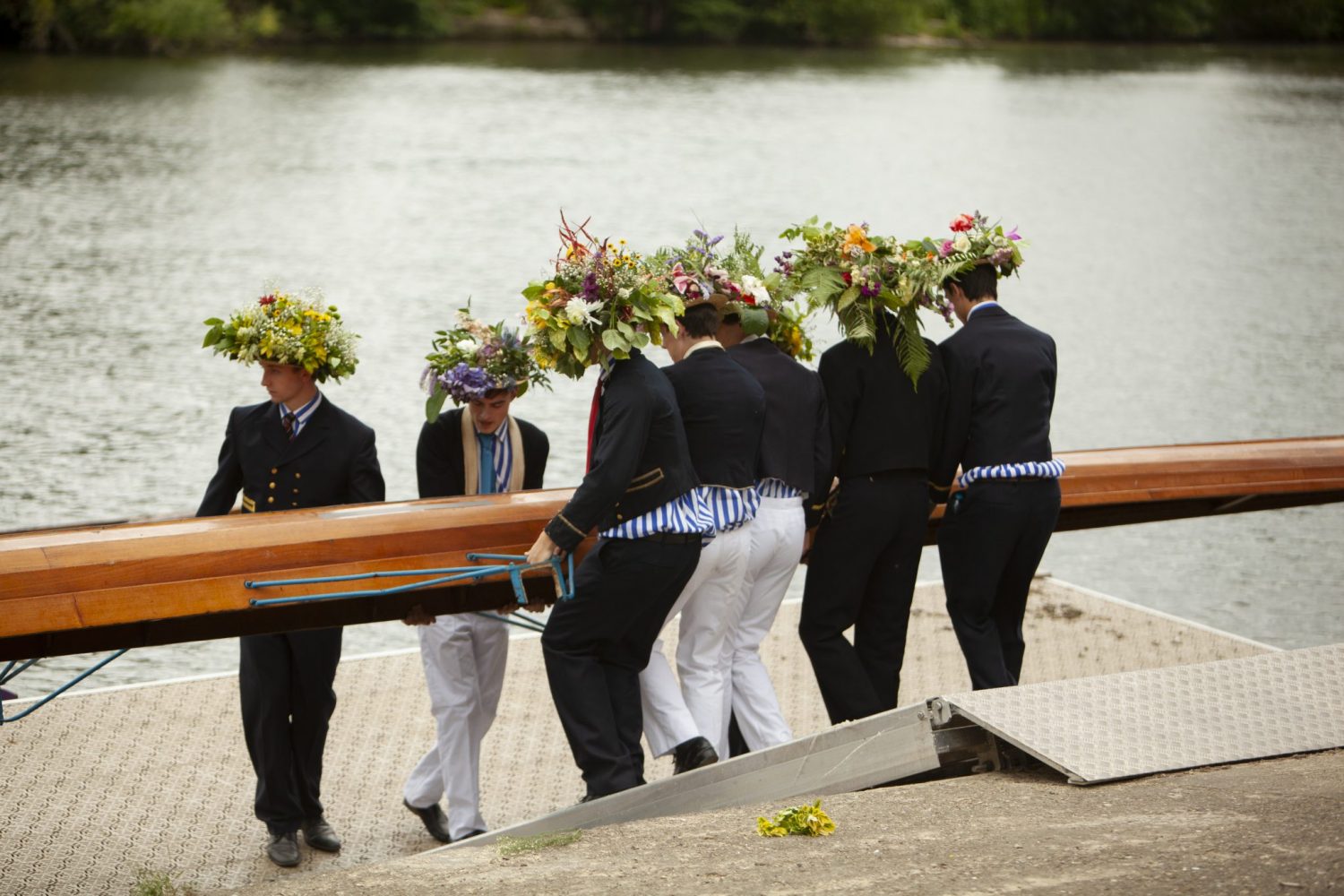
The wooden boats are clinker, fixed seat, and most have fixed pin (as opposed to swivel) rowlocks. The blades have ‘needle’ spoons and the leading boat is a ten-oar. All the rowers are dressed in the uniform of eighteenth-century midshipmen, with the cox dressed as an admiral or other senior naval officer of Nelson’s era.
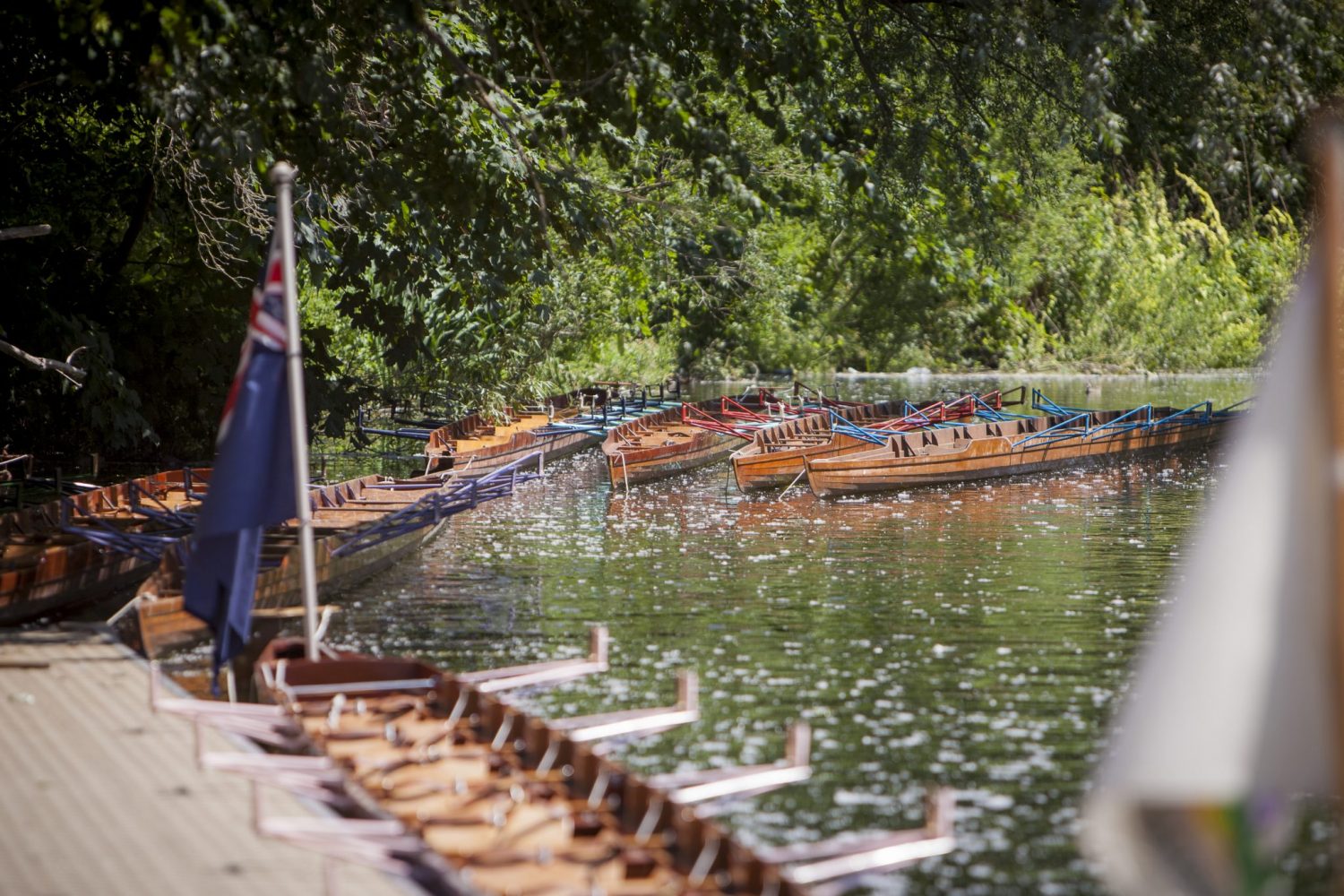
Most strikingly, the oarsmen wear straw boaters that have been extravagantly decorated with fresh flowers by their house matrons or ‘Dames’. The uniforms of the senior crews can be viewed on the website ‘Eton Colours’.

There are two notable dates for Eton boys and their families during the year. There is St Andrew’s Day, for which the main attraction is the impenetrable ‘Wall Game’, and ‘The Fourth of June’ (which is rarely held on 4 June). This is the birthday of Eton’s greatest patron, King George III (1738-1820), and is the school’s equivalent of parents’ day or open day. The entertainments include a wide range of exhibitions, a promenade concert, a performance of speeches, a cricket match against Old Etonians, and the Procession of Boats. The Procession is a ‘row past’ by most of the school’s boat club in front of the parents and the teachers assembled in one of the school fields that rolls down to the Thames. It starts with the most senior boys’ boats and ends with those of the youngest.Â
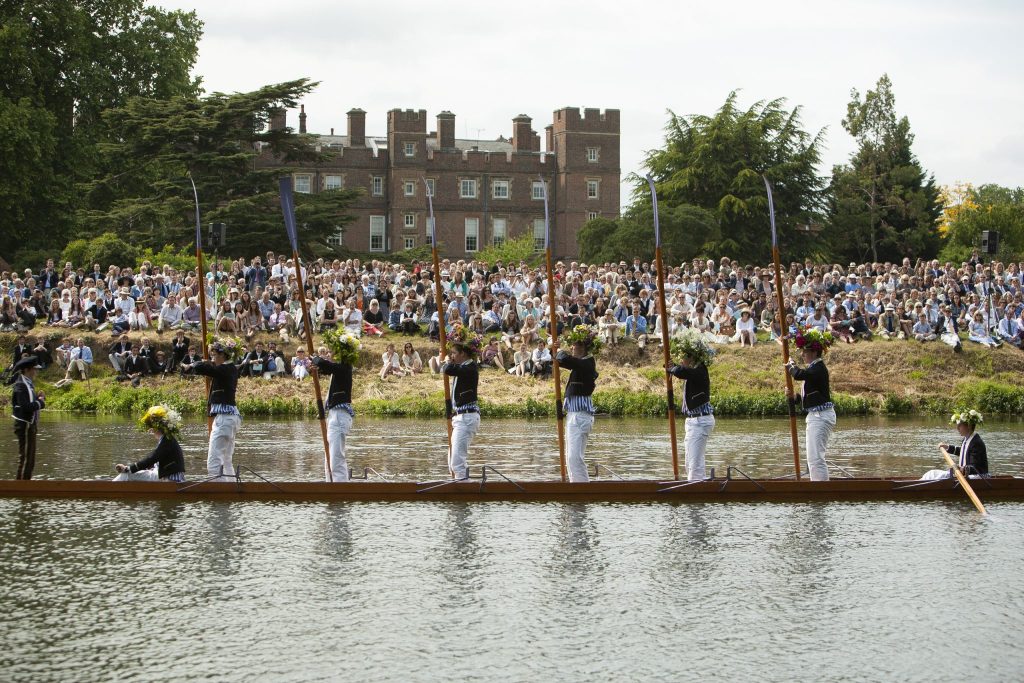
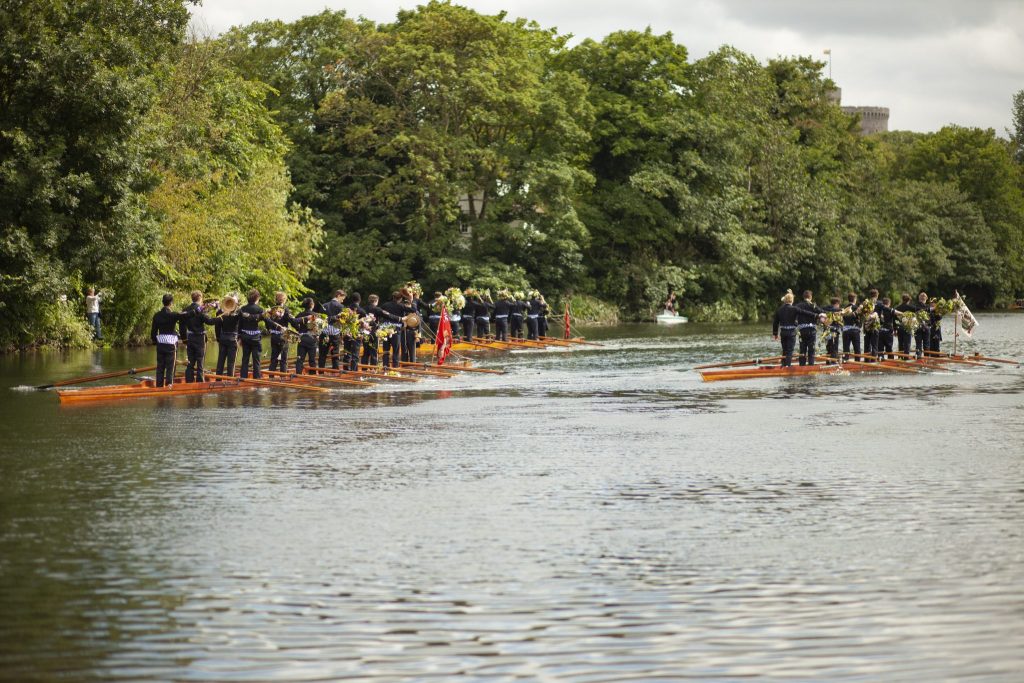
At a certain point in the row past, each boat in turn stops and the entire crew and the cox stand up. Those in boats with open fixed pin gates hold their oars erect. While Victorian eights are a little more stable than are modern racing boats, this is still a difficult thing to do. They then face Windsor Castle, remove their hats and cheer the Queen, the school, and the memory of George III, shaking the flowers from their boaters into the water. The crew then resume their seats and row away.
The first boat to stand and salute the School and Her Majesty the Queen is Monarch, the ten-oar. It is usually stroked by the Captain of the Boats and crewed by senior boys who help administer internal rowing.
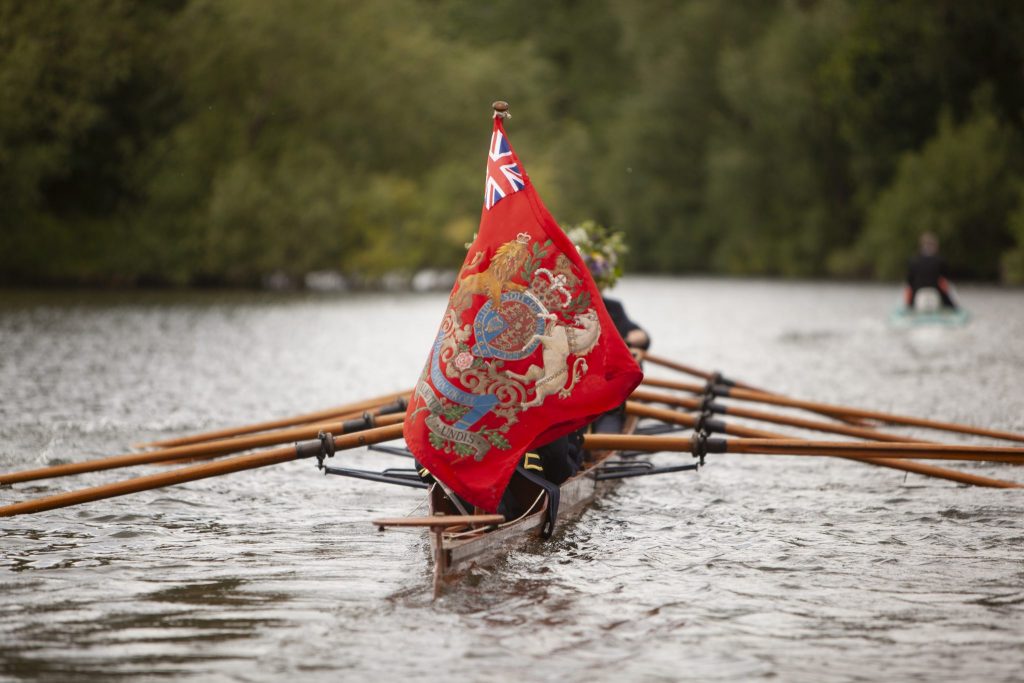
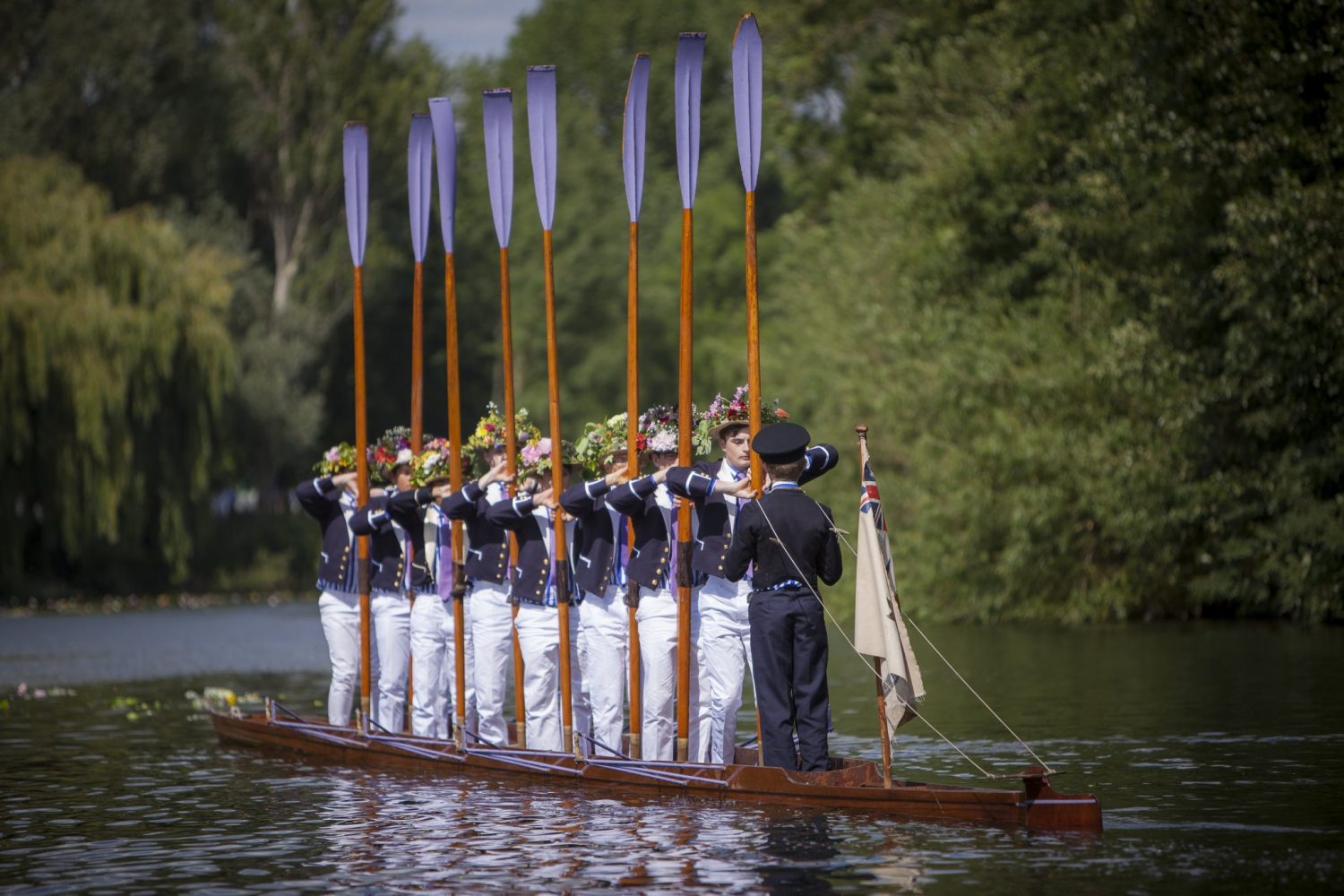
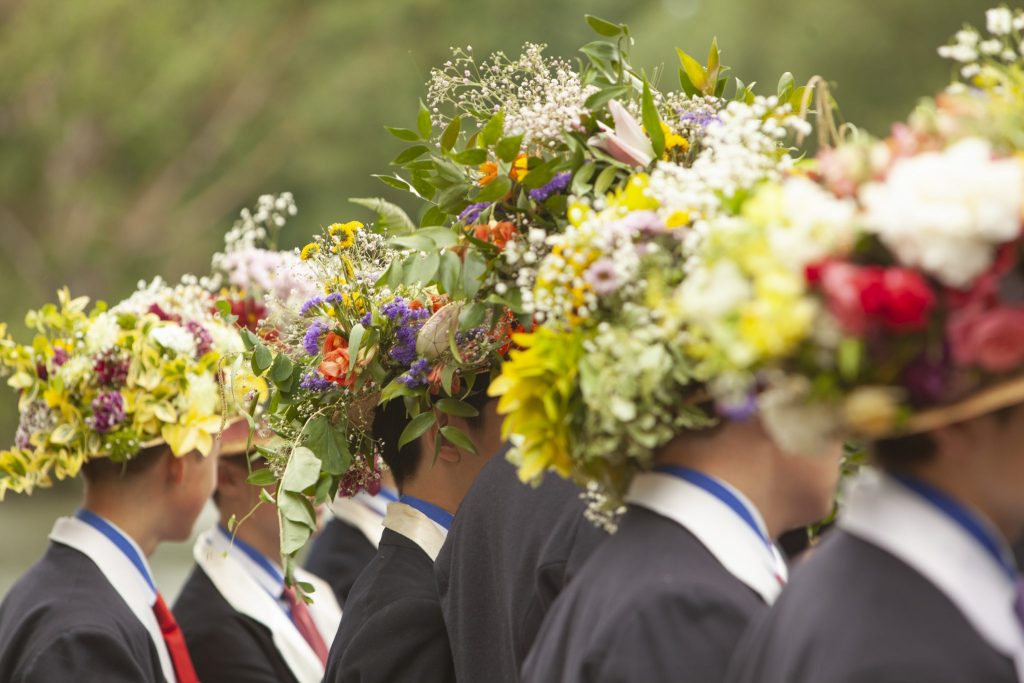
Boats, which are now racing boats – clinker-built wooden ones – bear famous names from the Napoleonic War era like Thetis and Hibernia and Dreadnought.
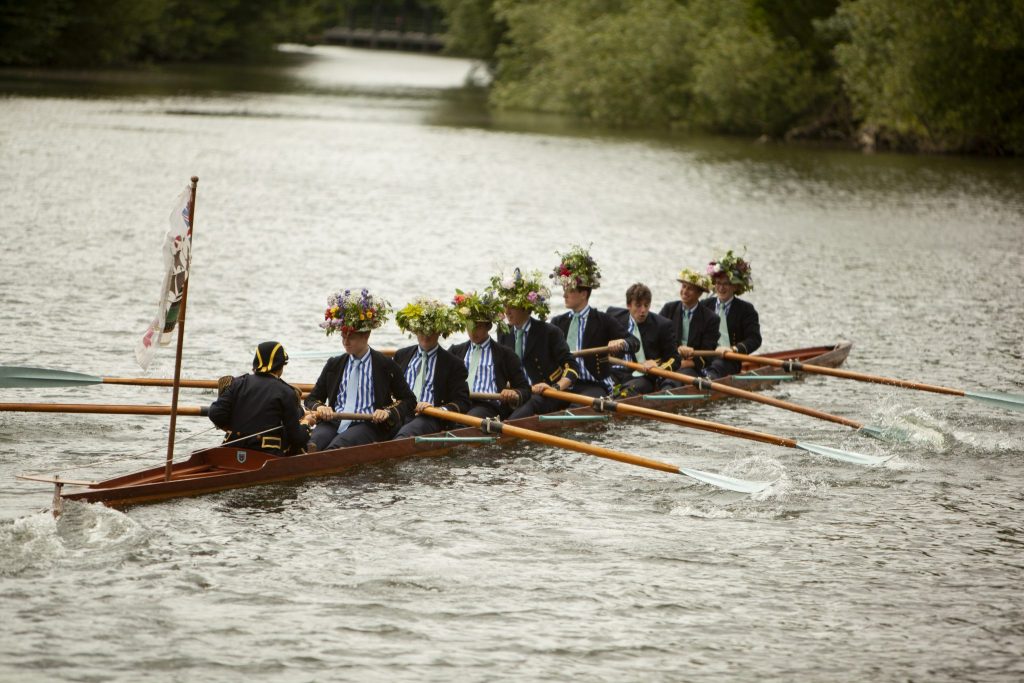
There was even a boat called The Monarch, and that is unique. It has ten oarsmen and a cox. There is no other ten-oared boat that we know of in the world.
As part of our commitment to Eton College, we regularly attend sports matches and competitions. We also try to be there for special days such as the Fourth Of June, Procession of boats, St Andrews Day, Mufti Day and so on.
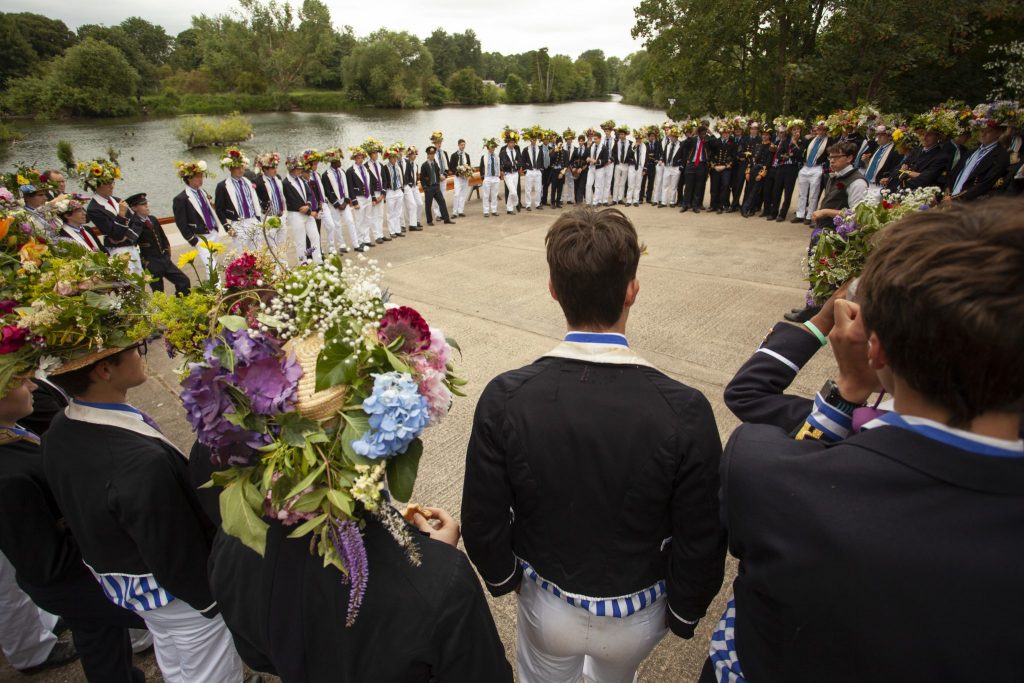
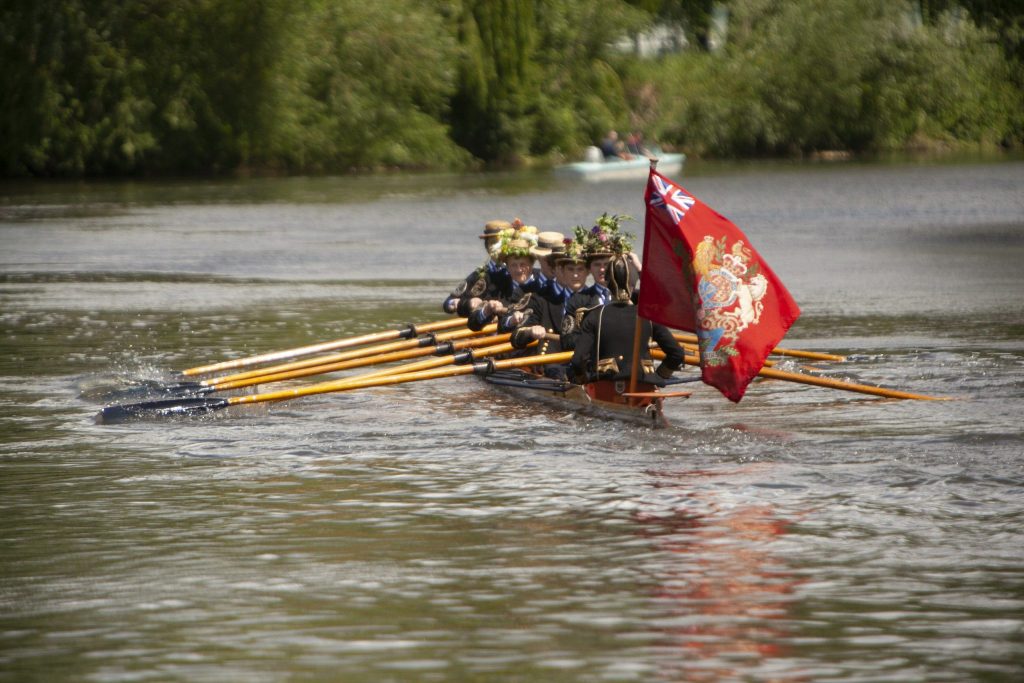
We are also asked to photograph most of the House and School Plays which are also available to view on our website after each event.
